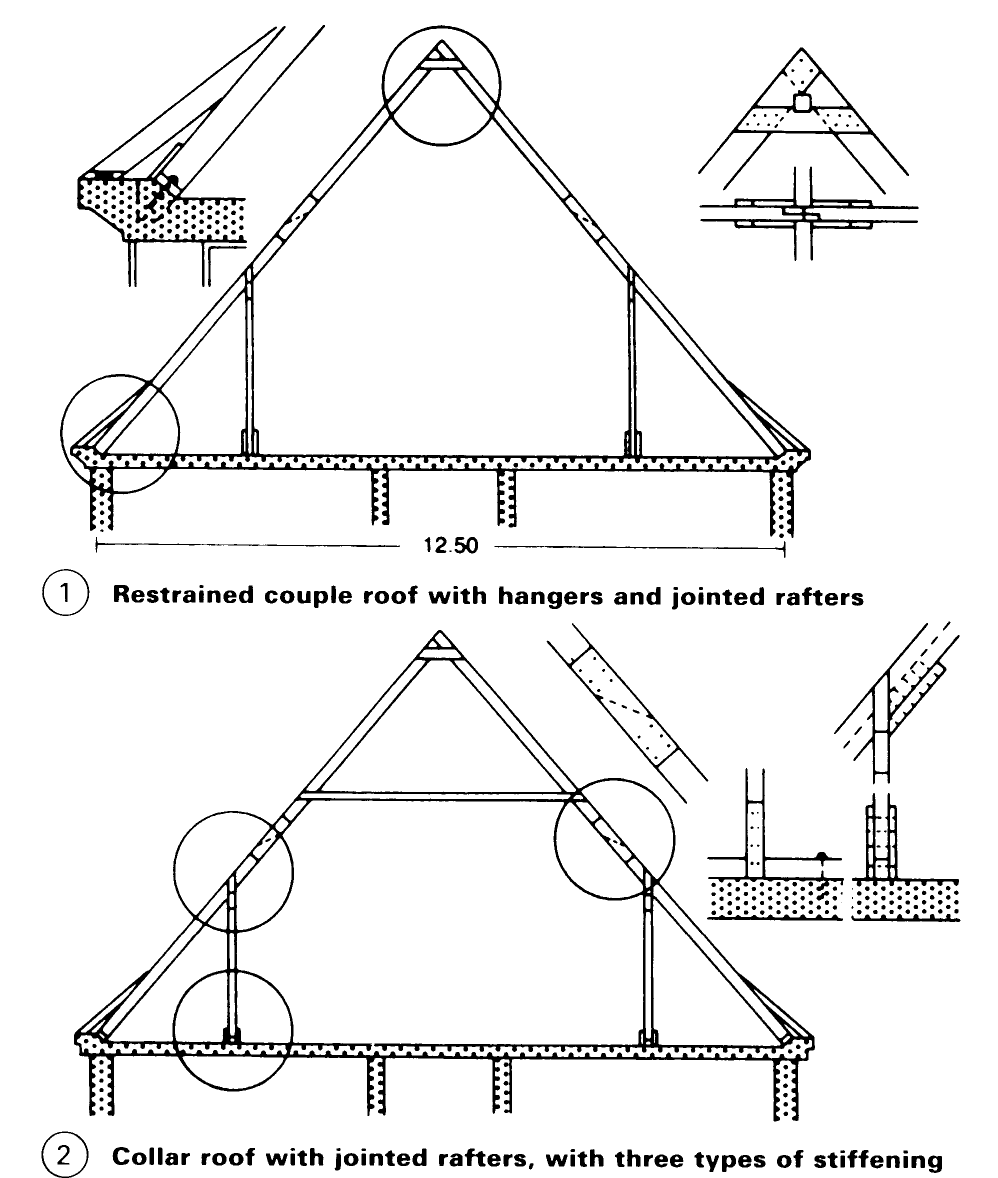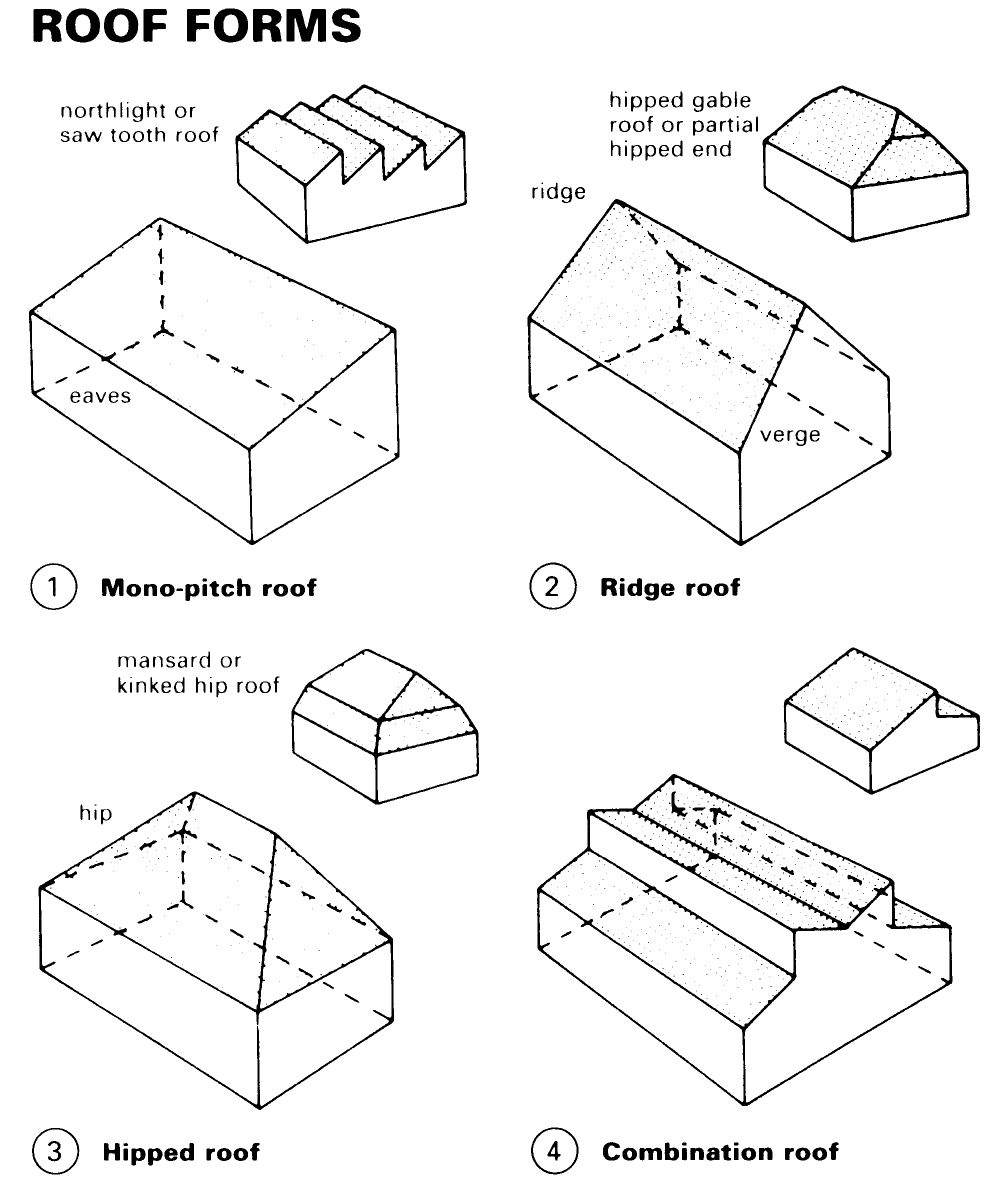Roof Structures. Roof Covering
Roofs form the upper enclosure of buildings, protecting them from precipitation and atmospheric effects (wind, cold, heat). They comprise a supporting structure and a roof cover. The supporting components depend on the materials used (wood, steel, reinforced concrete), roof slope, type and weight of roof covering, loading, etc. Loading assumptions must comply with current regulations (dead-weight, live loads, wind and snow loadings).
A distinction is made between roofs with and without purlins, because of their different structural system, and of the different functions of the supporting components. However, these two types of construction may be combined. The different types of load transfer also have consequences for the internal planning of the building.



In a purlin roof, rafters have a subordinate function (round section timber spars also possible for small spans). Purlins are load-bearing beams, conducting loads away from the rafters to the supports. Regular supports are required for the purlins (trusses or cross-walls). Early type: ridge purlin with hanger. Double pitch purlin roofs have at least one hanger, situated in the centre of the roof.
Suitable when the length of the rafters < 4.5 m; on wider house structures, with rafter length > 4.5m, then two or more purlins with suitable vertical hangers are required. A rafter roof (rigid triangle principle) is possible in simple form, with short rafters up to 4.5m. If the rafters' length exceeds 4.5m, intermediate support is required in the form of collars. This regular, strong system of construction provides a support-free internal roof space.

Couple close roofs require a strong tensile connection between the feet of the rafters and the ceiling beams. Sprocketed eaves are a common feature, giving a change of angle in the roof slope. Simple couple and collar roof construction is unsuitable for large roofs. Collar roofs are suitable for building widths to approx. 12.0m, rafter lengths up to 7.5m, collar lengths up to 4m. The collar roof is a three-link frame with a tension member. Prefabricated roof trusses are a very common form of structure for pitched roofs. While economical in the use of timber and light and easy to erect, they have the disadvantage of totally obstructing the roof space.


Roof Covering. Thatched roofs are of rye straw or reeds, hand-threshed 1.2-1.4m long on battens, 300mm apart with the thatching material laid butt-end upwards and built up to a thickness of 180-200mm. The life of such a roof is 60-70 years in a sunny climate, but barely half that in damp conditions. Shingle roofs use oak, pine, larch, and, rarely, spruce. Slate roofs are laid on > 25mm thick sheathing of > 160mm wide planks, protected by 200 gauge felt against dust and wind.
Overlap is 80mm, preferably 100mm. The most natural effect is given by 'German slating' – (12). Rectangular patterns are more suitable for artificial slates (cement fibre tiles) (13). Tiles: choice of plain tiled, interlocking tiled, or pantiled roof – (14, (15)-(17) or concrete roof tiles with ridge capping – (15). Special shaped tiles are available to match standard roof tiles - (9):



Date added: 2023-01-01; views: 739;
